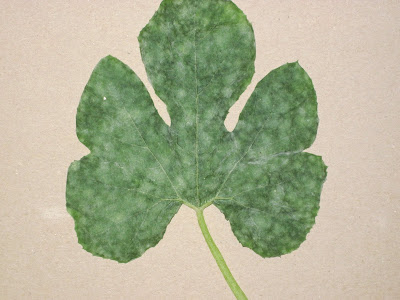By Andy Wilson, Extension Specialist
Fall is a good time for vegetable gardening in Pinellas County and cucumbers are one of the many vegetables that can be grown now. Cucumbers are not difficult to grow but, as with other vegetable crops, some problems can occur. One of the most common disease problems of cucumbers is powdery mildew. We usually receive many samples of this disease during the fall through spring vegetable gardening seasons at our Lawn and Garden Help Desk.
 Powdery mildew is one of the easier to diagnose diseases due to the distinctive white fungal growth it produces. This growth resembles a fine dusting of talcum powder over the leaves. Heavily infected leaves turn brown, shrivel and die.
Powdery mildew is one of the easier to diagnose diseases due to the distinctive white fungal growth it produces. This growth resembles a fine dusting of talcum powder over the leaves. Heavily infected leaves turn brown, shrivel and die.
Where possible, select cucumber varieties that are known to be resistant to powdery mildew. Also, keep the plants adequately fertilized. Cucumber plants that are suffering from nutrient deficiencies tend to be more vulnerable to attack by powdery mildew than healthy plants.
Among the fungicides that can be applied to cucumbers in the home garden to control powdery mildew are copper fungicides and neem oil. Neem oil may harm bees and other beneficial insects. Be sure to read and follow all label directions. For more information on disease control on cucumber see this fact sheet: http://edis.ifas.ufl.edu/PG046
 0
0
